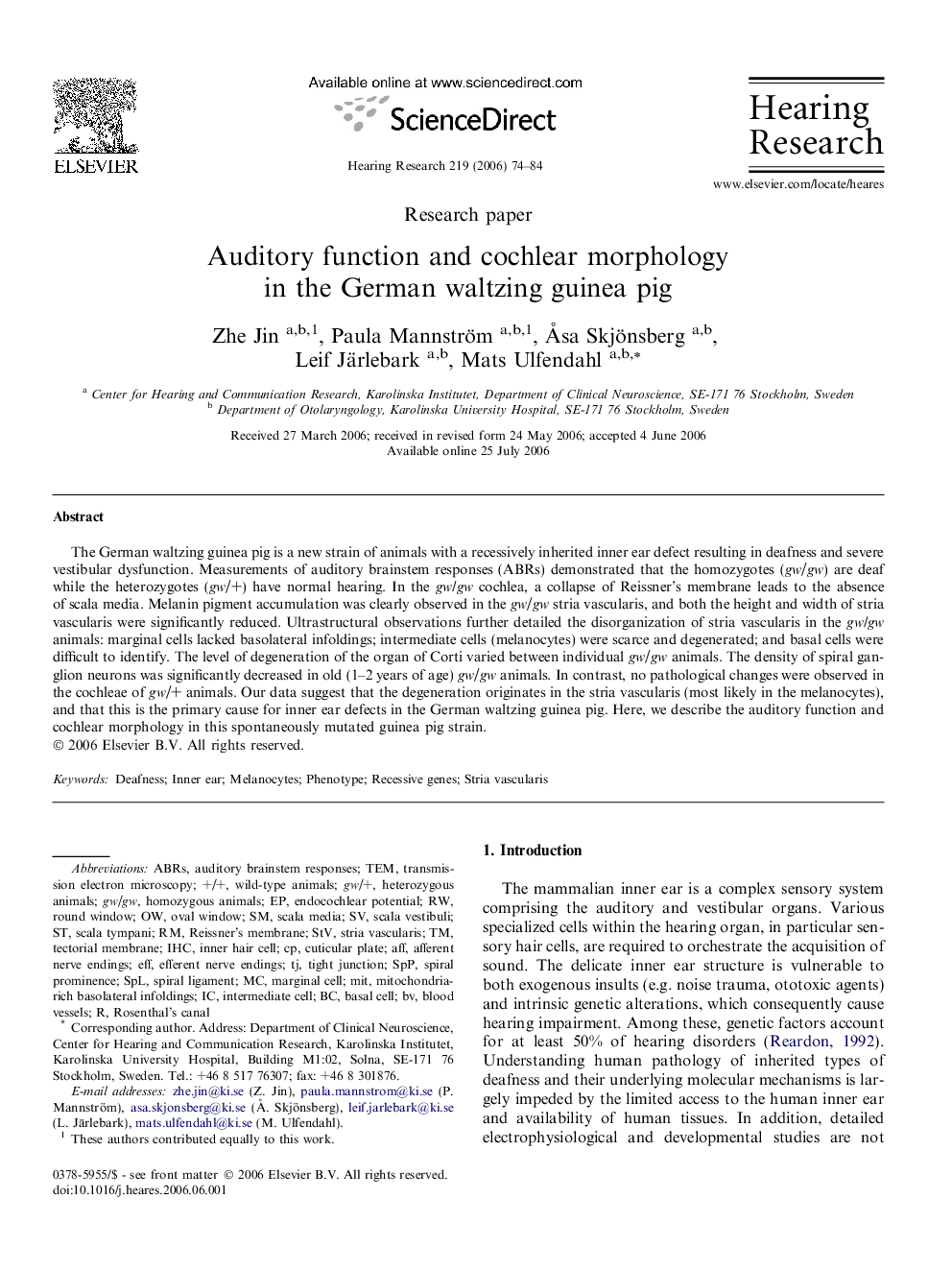| Article ID | Journal | Published Year | Pages | File Type |
|---|---|---|---|---|
| 4356505 | Hearing Research | 2006 | 11 Pages |
Abstract
The German waltzing guinea pig is a new strain of animals with a recessively inherited inner ear defect resulting in deafness and severe vestibular dysfunction. Measurements of auditory brainstem responses (ABRs) demonstrated that the homozygotes (gw/gw) are deaf while the heterozygotes (gw/+) have normal hearing. In the gw/gw cochlea, a collapse of Reissner's membrane leads to the absence of scala media. Melanin pigment accumulation was clearly observed in the gw/gw stria vascularis, and both the height and width of stria vascularis were significantly reduced. Ultrastructural observations further detailed the disorganization of stria vascularis in the gw/gw animals: marginal cells lacked basolateral infoldings; intermediate cells (melanocytes) were scarce and degenerated; and basal cells were difficult to identify. The level of degeneration of the organ of Corti varied between individual gw/gw animals. The density of spiral ganglion neurons was significantly decreased in old (1-2 years of age) gw/gw animals. In contrast, no pathological changes were observed in the cochleae of gw/+ animals. Our data suggest that the degeneration originates in the stria vascularis (most likely in the melanocytes), and that this is the primary cause for inner ear defects in the German waltzing guinea pig. Here, we describe the auditory function and cochlear morphology in this spontaneously mutated guinea pig strain.
Keywords
AFFABRsSTVSPPSPL+/+Tight junctionEffscala tympaniIHCTemmitspiral ligamentBlood vesselsInner hair cellIntermediate CellMarginal cellBasal cellStria vascularisTectorial membraneReissner’s membranePhenotypescala mediamelanocytesTransmission electron microscopydeafnesscuticular plateauditory brainstem responsesendocochlear potentialscala vestibulioval windowround windowInner ear
Related Topics
Life Sciences
Neuroscience
Sensory Systems
Authors
Zhe Jin, Paula Mannström, Ã
sa Skjönsberg, Leif Järlebark, Mats Ulfendahl,
